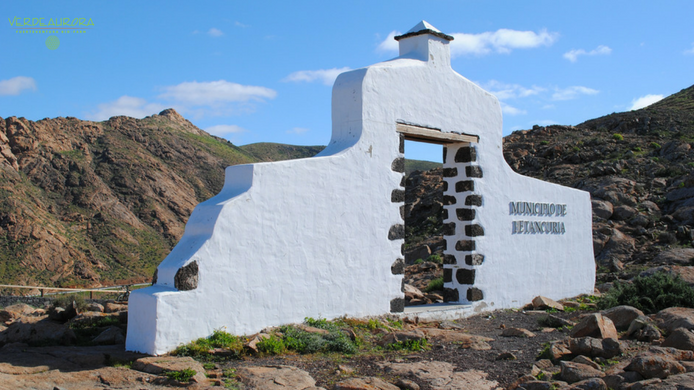Why the name of Fuerteventura?

Fuerteventura is one of the paradises of Spain. However, in its beginnings it was not a tourist enclave as at present. In its origins it was an almost desert place in which the population was scarce and many of those who ended up in Fuerteventura were exiles from the peninsula. Do you want to discover the history of Fuerteventura?
The majoreros were those who inhabited the island years before it was conquered. It is believed that this population comes from the Berber tribes of North Africa, since they have common characteristics. At that time, Fuerteventura was divided into two kingdoms. The north known as Maxorata and directed by Guize and the south called Jandía, governed by Ayoze.
Ar-Bani (The Wall) was the name given to Fuerteventura by that wall that separated it into two kingdoms. This denomination is believed to come from an African tribe known as Abanni or Abannae. These words evolved to Ar-Bani because of their meaning. Ar, place and Bani, wall, “the place of the wall”, by the wall that distanced the two kingdoms that formed Fuerteventura.
In later texts, Juan de Bethencourt names the island as Albanne, Albanye, Arbanne, Erbanye or Erbennye. Whereas Gadifer de la Salle referred to her as Erbanne or Erbane. Name that would be used to name the island of Fuerteventura in the years before the conquest.
However, the land was known long before by Greeks, Romans and Phoenicians, who called it: Planaria and Capraria, due to the absence of very high areas and the large presence of goats, respectively.
In 1402 the conquest of the island begins when the Frenchman, Jean de Bethencourt, supported by an army of 300 men, moored on the coasts of Fuerteventura. In that year, the island of Majorera appears for the first time on a map. Angelino Dulcet was commissioned to place it under the name of Forte Ventura. Although the meaning of Forte is quite clear, there are doubts about what Ventura can mean.
Three years later, when Guize and Ayoze converted to Catholicism, the conquest came to an end. In the interior zone, the capital of Fuerteventura, Betancuria, is founded, which receives the name in honor of its conqueror. After living several years in peace and without altercations, in 1460 the Portuguese set out to invade the Canary Islands. In their attempt to take over Fuerteventura, the inhabitants of Majorero move to the interior of the island to avoid being captured. With the conquest of Gran Canaria, Fuerteventura went into the background and considered the island of less importance in this way.
Another important point in the history of the Canary Island happens in 1476 when it becomes the Territorial Manor of Fuerteventura. During this time the Majorera Island depends on the Catholic Monarchs and is colonized by Galicians, Andalusians and Castilians as well as Italians, Dutch and French. Fuerteventura experiences economic progress and general development. However, in 1812 the Cortes de Cádiz abolished the manors. At this moment, Fuerteventura becomes part of the Canary Islands.
In the eighteenth century the Militia Regiment was created, formed by the colonels who acquired powers of great importance as being the possessors of the territory, besides being the life and hereditary position. Although the capital of Fuerteventura continues to be Betancuria, the municipality of La Oliva becomes important during this century.
The entire island was governed by the same feudal system and a series of rules that were taken from La Oliva. Finally, in 1820 this organization ended and different administrative centers were created.
In the second half of the nineteenth century, Puerto Cabras, now Puerto del Rosario, became the capital of Fuerteventura because of the importance it acquired in the wheat or barrel trade, with which caustic soda was prepared. However, despite its growth Puerto Cabras depended on Tetir, one of the municipalities of Fuerteventura, until in 1860 it was separated from it. Finally, in 1956 Puerto Cabras changed its name to Puerto del Rosario.



